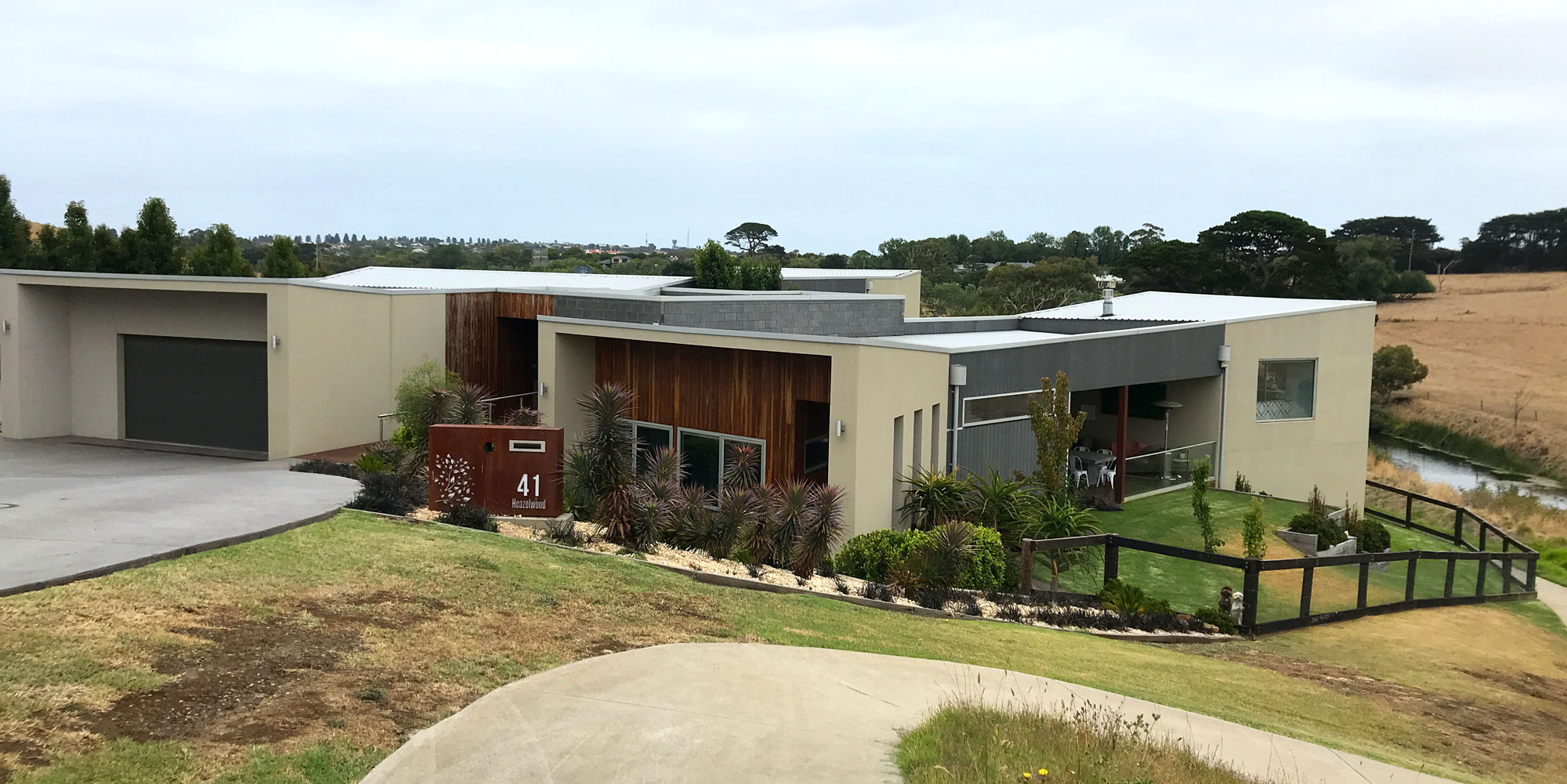Site costs are the costs of preparing your block of land for building. But how can you make sure that site costs won't blow your budget? Gaining an understanding of site costs and how they're determined is a good place to start. Read on as we share our inside knoweldge on the true price of site costs. It's a long article but possibly one of the most valuable you'll ever read if you're building a new home in Australia today.
soil type
soil classes
site preparation
site levelling options

You can see from the picture below that even when a site is filled (opposed to cut) that it may still require significant retainment costs). Sadly, many people are not aware that they'll need to deal with a site fill requirement until their builder is long gone. In my opinion, retainment costs of a filled block is one of the most significant unexpected hidden costs of building. This is one reason why we prefer to perform a site cut rather than a site fill. At least that way, you know what your true costs are from the beginning.
In the photo below this site fill is on the boundary. Hopefully the owner was made aware by their builder that they will be legally accountable for the full costs of the retainment wall given that they are the ones who have altered the natural ground level. Their neighbours will only be legally liable to contribute half the cost of a standard paling fence.

The image below shows how an alternative to installing expensive retaining walls may be to create a 'batter' down to the natural ground level. Take note of the very back of the block. Losing 2 meters of backyard in battered garden bed has saved them around $20,000 in retainment costs.

The image below shows an excellent example of where property owners have saved huge retainment costs by battering the land and using boulders in forming the landscaping.

An alternative to site cut or fill
Most project builders will require that you build on a concrete slab. Therefore a site cut or site fill is required. However there is another option which a custom builder can easily accommodate. The video below shows a home I recently had built. For relatively no extra cost I created $10,000-$15,000 in extra value as building straight out on concrete piers (rather than digging down and building on flat slab) gave me elevated panoramic views of parkland that would otherwise not have been visible.
Retainment Examples
The video below shows a full retainment which came at an expense of approximately $25,000. This block however had been priced accordingly to allow for the site costs the purchaser incurred. ie. The purchase price was $25,000 less that surrounding blocks that required little or no retainment.
See further examples of retaining walls over a variety of scenarios.



Retaining my own home
The below image shows the back of my own home. The front of my home is on the natural ground level yet the back of my home was built into the side of the hill. We retained the back section using concrete blocks that we later rendered. You can see that the right side of the home is retained whilst the left side sits on natural ground level. Purchasing a block on a hill did pose limitations sure, but it also enabled us to capture 180 degree views as far as the eye can see.

Another examples of a home built into a hill side


CASE STUDY

Following a recent talk I gave at a First Home Owners Information night I was approached by a young couple from the city to had moved to regional Victoria as a lifestyle choice. They told me that they were in negotiations to purchase a 750m2 block and that they had an overall budget of $350,000.
I quickly did the math in my head and knew something was wrong. A 750m2 block close to the CBD? How were they possibly going to afford to build on that given that a block of that description in that particular area would be around the $160-$180k mark. That would leave them with a $190k building budget at best without even taking into account other miscellaneous costs such as fencing, landscaping etc. Impossible I thought to myself.
They then excitedly went on to say that they had got a bargain and with delight in their eyes they went on to tell me that they were purchasing the block from a real estate agent for just $115,000. Red flag right there. They didn't know... how could they possibly know... THE GOLDEN RULE; If you find a cheap block, there is always a reason why. You NEED to find out what it is.
After further investigation I found out what it was. I realised I knew the area quite well, at least well enough to know that the entire subdivision is build on sandstone and that their block had the steepest slope of all on it.
The excavation costs to dig into the slope given that we were dealing with sandstone would have been astronomical. Not to mention that they would have only had the one option of building a double story which would add significantly more cost to their build.
Thankfully, this couple met me just in time and did not sign the contract as planned the following day. Fate saw us come together to save them from making the biggest and most costly mistake of their life.


